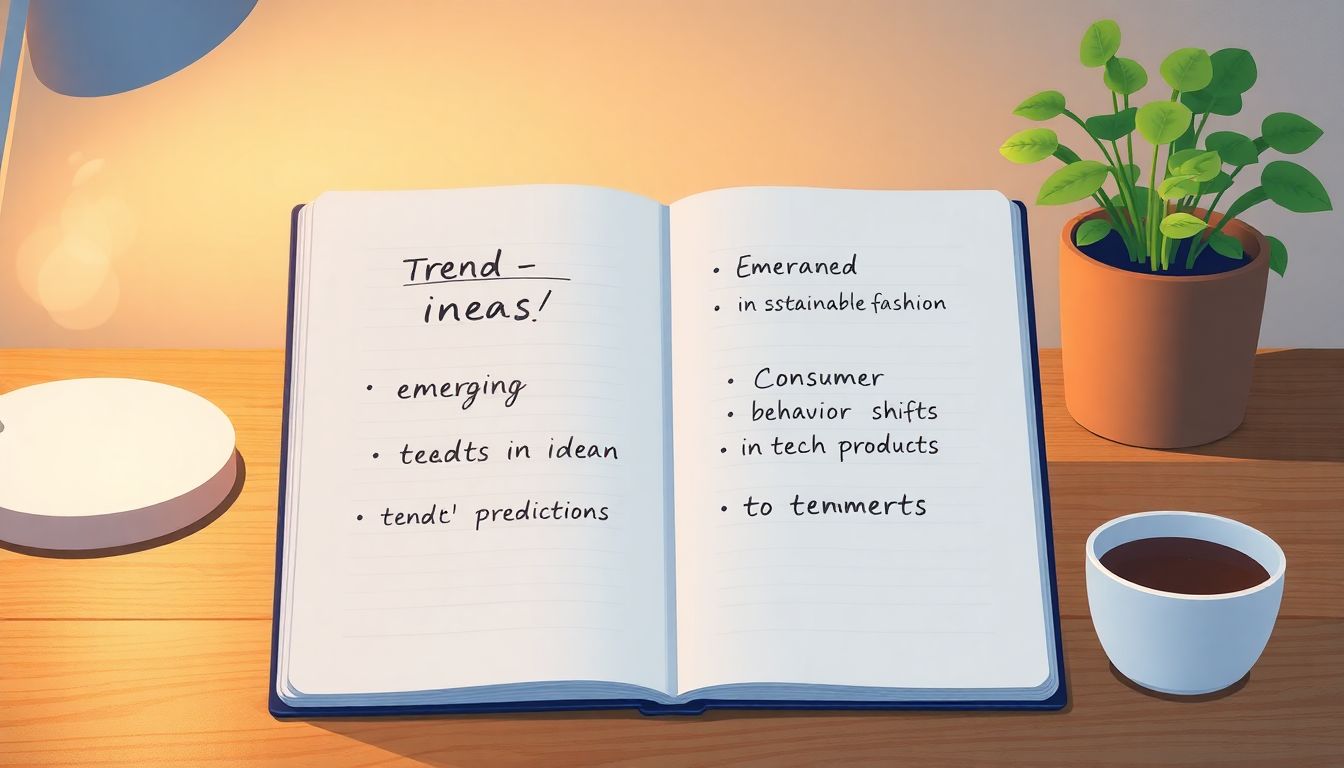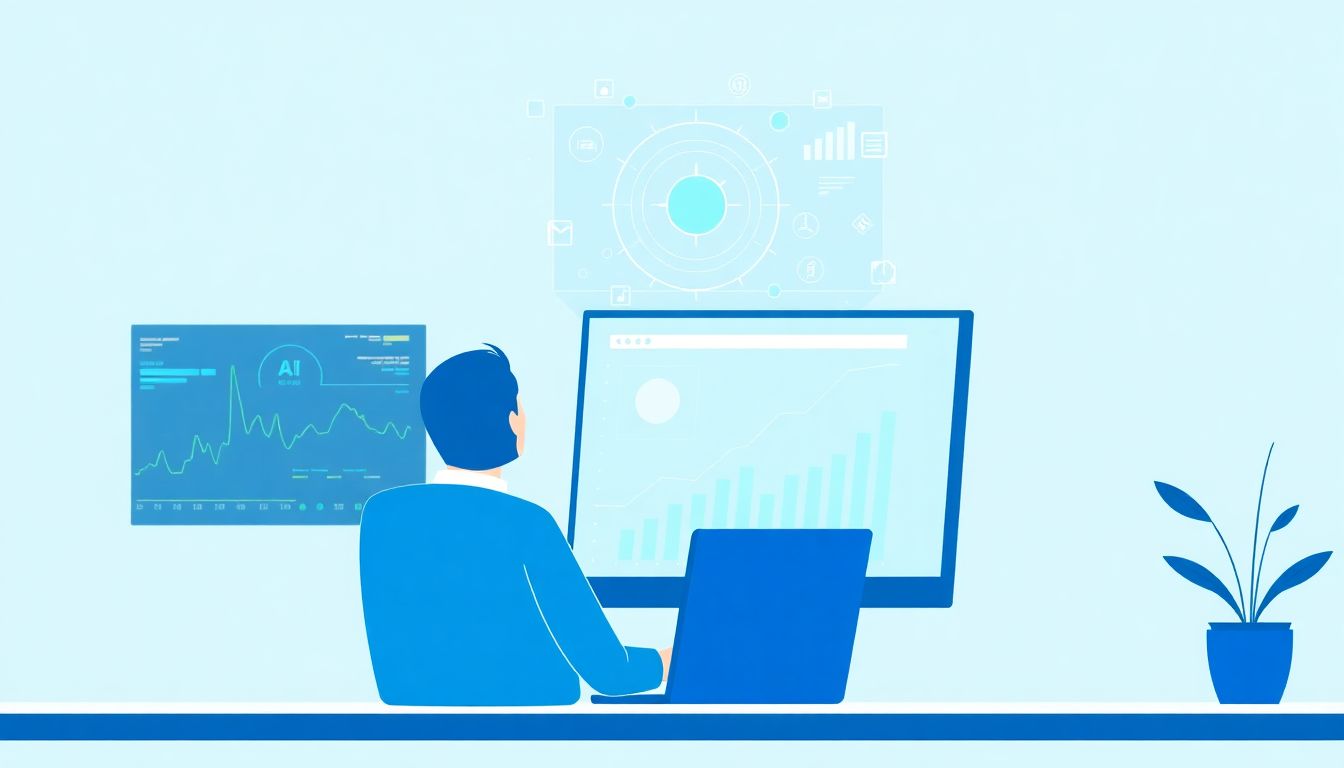If you’ve ever tried predicting trends, you know it can feel like reading tea leaves—complex and sometimes wildly inaccurate. The chaos of data can leave anyone overwhelmed, and it’s easy to feel lost in a sea of information with no clear direction. You’re not alone in thinking, “Is there a better way to do this?”
But what if I told you that by harnessing the power of ChatGPT, you can make more informed predictions with less effort? Stick around, and I’ll show you how this innovative tool can transform your approach to trend forecasting and help uncover insights that seem just out of reach.
In this guide, we’ll explore everything from setting up ChatGPT for analysis to tips on interpreting its responses. Trust me, your trend-spotting game is about to get a serious upgrade!
Key Takeaways
- Use ChatGPT for trend forecasting to simplify complex data analysis and gain actionable insights.
- Start by analyzing your historical or market-related data, and create specific prompts for ChatGPT to guide the analysis.
- Integrate ChatGPT with existing data analytics tools for better trend analysis and customize prompts for more relevant outcomes.
- Utilize both structured and unstructured data for comprehensive trend insights, considering various data sources.
- Craft clear and concise prompts to get focused responses from ChatGPT, helping reveal key market trends.
- Interpret ChatGPT’s responses by evaluating structure, context, and data points to extract valuable insights for business strategies.

How to Use ChatGPT for Accurate Trend Forecasting
Using ChatGPT for trend forecasting can significantly enhance your ability to make accurate predictions.
Start by analyzing the data you have, whether it’s historical, market-related, or consumer behavior insights.
Next, formulate specific queries that prompt ChatGPT to utilize its natural language processing capabilities for effective analysis.
For example, you could ask: “Analyze the trends in e-commerce sales over the past year and predict future growth.”
This type of prompt guides the model to draw on relevant data patterns, providing you with actionable insights.
Another useful prompt could be: “Provide insights on consumer preferences in digital products based on recent market analyses.”
By consistently refining your prompts, you can adapt the responses to focus on specific sectors or demographics for more precise outcomes.
Understanding Predictive Analytics with ChatGPT
Predictive analytics is about using historical data and statistical algorithms to forecast future outcomes.
With ChatGPT’s capabilities, you can streamline this process by leveraging its understanding of patterns in text data.
Begin with a clear question, such as: “Explain how predictive analytics applies to social media marketing trends.”
This can lead to a comprehensive analysis that combines various data sources, including consumer engagement metrics and market fluctuations.
In addition, you can ask ChatGPT for specific methodologies: “What statistical models are best suited for predicting changes in user behavior?”
By requesting explanations of different forecasting models, you can gain clearer insights into appropriate applications for your data challenges.
Setting Up ChatGPT for Trend Analysis
To set up ChatGPT for effective trend analysis, first ensure you have the necessary integrations in place.
Accessing ChatGPT’s API is a great starting point, allowing you to feed it various data sets.
It’s advisable to configure the platform according to your specific analysis needs; think about what types of data will offer the best insights.
Use this prompt for a smoother process: “Guide me through integrating ChatGPT with my existing data analytics tools.”
Once integration is done, fine-tune the model by iterating on your prompts to further adapt its responses to your context.
Also, consider customizing user interface options to make it easier to visualize outputs that can direct your forecasting process.
Types of Data for Effective Trend Forecasting
Effective trend forecasting relies heavily on the types of data you utilize.
Structured data, such as sales figures from a database, allows for easy analysis and statistical modeling.
On the other hand, unstructured data, like social media conversations, can provide rich context but requires preprocessing.
For a focused analysis, consider gathering data from various sources; for example: “List historical sales data and current social media sentiment about our brand.”
This dual approach helps paint a fuller picture of market trends.
Utilizing market trends and historical data, you can also analyze influences such as economic factors and consumer sentiment.
Gather diverse data sets and categorize them as needed, which will make your analysis more comprehensive and targeted for predictions.

Creating Effective Prompts for Trend Predictions
Creating effective prompts is essential for generating valuable insights from ChatGPT.
A prompt should be clear and concise, directing the AI to focus on specific aspects of the data you’re interested in.
Try using prompts like: “Identify the key drivers behind the surge in online shopping during the holiday season.”
This type of request helps ChatGPT target its response to relevant trends and causes.
Here are some prompts you can use right away:
- “What are the emerging trends in sustainable fashion based on recent market reports?”
- “Analyze consumer behavior shifts in tech products over the last five years.”
- “What impacts are social media influencers having on Gen Z purchasing behavior?”
- “Summarize the latest research on consumer sentiment about electric vehicles.”
Each of these prompts is designed to elicit comprehensive information for trend analysis.
Keep in mind that experimenting with phrasing can also yield different insights, so don’t hesitate to adjust your approach.
Interpreting ChatGPT Responses for Trend Insights
When you receive responses from ChatGPT, interpreting them accurately is key to gaining valuable insights.
Start by assessing the main points highlighted in the response.
You can use prompts to ask for clarity on certain aspects: “Could you elaborate on the factors contributing to the predicted trend?”
Remember to evaluate the relevance of the responses based on your original inquiry.
Here are some tips for effective interpretation:
- Analyze the structure: Is the information presented in a logical manner?
- Look for data points: Are there specific statistics or examples included that support the trends discussed?
- Consider context: Does the response take into account recent developments or shifts in the market?
A well-interpreted response can provide actionable insights that inform your business strategy.
Use these interpretation prompts to dig deeper:
- “What data sources influenced your analysis of this trend?”
- “What are the potential implications of this trend for our business?”
These questions encourage a more detailed understanding of the insights provided.

Best Practices for Combining Human Insights and AI Predictions
Combining human insights with AI predictions can significantly improve your trend forecasting accuracy.
The first step is to ensure that human analysts are involved in selecting the data that will be fed into ChatGPT.
Use prompts that encourage collaboration, such as: “How can we enhance these AI predictions with our latest market research findings?”
Fostering discussion around the AI outputs can lead to deeper insights and more nuanced understandings of the data.
Next, prioritize a feedback loop where human insights are continually fed back into the model.
Establish prompts that ask the AI to adjust its predictions based on new information: “Given this recent consumer survey, how should we alter our trend predictions?”
Moreover, strive to document and analyze the reasoning behind human decisions to identify consistent patterns or areas where AI predictions fall short.
For example: “Review the last quarter’s sales results; what insights can we gain from comparing them with ChatGPT’s forecasts?”
This results in a richer dialogue between human understanding and AI capabilities, paving the way for more informed strategies.
Real-World Applications of ChatGPT in Trend Forecasting
ChatGPT is increasingly being utilized across various industries for trend forecasting.
For instance, in retail, businesses are using AI to analyze purchasing data and consumer feedback to predict what products will sell well in the upcoming seasons.
You might prompt ChatGPT with: “What upcoming trends should we consider for our next product launch based on current consumer behavior?”
Additionally, in the finance sector, companies rely on ChatGPT to sift through news articles and social media to gauge public sentiment about stock trends.
Try using prompts such as: “What market trends could impact investment strategies based on recent news?”
Another application is in digital marketing, where businesses utilize ChatGPT to analyze engagement metrics and develop strategies tailored to evolving consumer preferences.
Encourage AI-assisted brainstorming with a prompt like: “Generate marketing strategies for our upcoming campaign based on recent consumer data.”
The diverse applications of ChatGPT can make your trend forecasting efforts not just reactive, but predictive, providing a competitive edge.
Limitations of ChatGPT in Predictive Analytics
While ChatGPT is a powerful tool, it comes with certain limitations that users should be aware of.
One critical issue is the model’s dependence on the quality of the data it receives.
If the input data contains biases or inaccuracies, these will be reflected in the AI’s predictions.
For a better understanding, you might ask: “What are the potential biases in our data that could affect AI predictions?”
Another limitation is that ChatGPT doesn’t have real-time data access, which can lead to outdated predictions.
Use prompts like: “How can we ensure that our data is up-to-date and relevant for trend forecasting?”
Additionally, context limitations exist; ChatGPT may struggle to understand intricate industry-specific nuances without adequate prompts.
Consider asking: “What industry-specific factors should we keep in mind while interpreting these AI-generated trends?”
Being aware of these limitations allows users to apply critical thinking and make informed decisions based on ChatGPT’s outputs.
Continuous Improvement: Learning from ChatGPT’s Predictions
Continuous improvement is essential for maximizing the value derived from ChatGPT’s predictions.
Start by establishing a process to regularly review the accuracy of the AI’s forecasts against real-world outcomes.
Formulate prompts to evaluate that process: “Analyze the accuracy of forecasts made last quarter and identify any discrepancies.”
Next, implement a system for gathering feedback from both human analysts and AI outputs to refine future predictions.
You might say: “What adjustments do we need to make to improve our predictive model?”
Additionally, consider retraining your model periodically to incorporate fresh data and learn from its past performance.
Use prompts such as: “Summarize key learnings from our previous forecasts that can improve future predictions.”
Through these practices, you can ensure that your use of ChatGPT evolves alongside changing market conditions, leading to enhanced forecasting capabilities over time.
FAQs
To set up ChatGPT for trend analysis, ensure access to a reliable dataset. Use clear prompts that specify the desired outcome and incorporate relevant context to improve the accuracy of predictions.
Effective data types include historical sales data, social media trends, economic indicators, and consumer behavior metrics. Diverse, high-quality data enhances ChatGPT’s ability to identify and analyze trends accurately.
To create effective prompts, be specific about the type of trend you want to analyze. Include context, timeframe, and relevant indicators to guide ChatGPT towards generating more precise forecasts.
ChatGPT may struggle with real-time data analysis and the integration of hyper-specific or niche datasets. Its predictions are based on existing data patterns and may not account for unprecedented changes or events.
